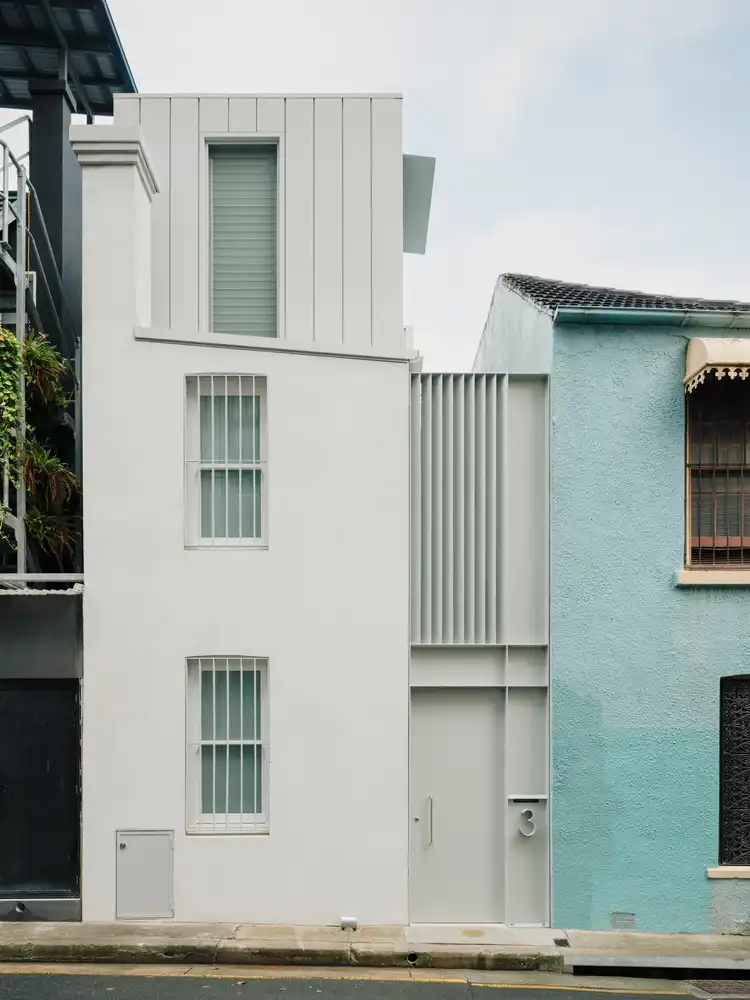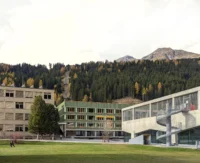Originally constructed in 1863 as one of four identical sandstone terraces, this residence in Sydney’s Potts Point has undergone a unique transformation over time. A 1980s subdivision removed its street-facing garden and shifted the main entrance to a rear laneway, altering the spatial and experiential logic of the home. This renovation—aptly named Back to Front House—sought to reestablish spatial coherence, improve livability, and sensitively extend the dwelling while respecting its heritage context.

Design Objectives
The brief called for several key interventions:
-
Introduce a more dignified and functional entry sequence
-
Open the interior living spaces to the rear courtyard
-
Expand the existing attic and introduce a new bathroom
-
Differentiate new additions from the heritage fabric in line with conservation regulations
Architectural Strategy
In response to the constraints of the Heritage Conservation Area, all new work is designed to be visually distinct yet respectful. A new three-storey steel-clad tower anchors the rear of the home, articulated with steel-framed glazing and horizontal sun hoods. This crisp, contemporary insertion contrasts with the restored sandstone façade and original timber-framed elements of the 19th-century structure.
A slender three-storey glazed link connects the new addition with the original house, preserving the existing sandstone as an internalized architectural relic—framing portals that visually narrate the building’s evolution.

Materials & Interior
Material choices were used to delineate old from new:
-
New Work: Grey travertine slabs, steel cladding, and steel-framed glazing
-
Original House: Oak timber flooring, retained sandstone masonry, and restored timber joinery
The internal stair—a key vertical element—features a combination of timber and steel under a large skylight, flooding the formerly dark interiors with natural light.
Sustainability & Performance
The home adopts a passive environmental strategy:
-
Natural cross ventilation enhanced by ceiling fans
-
Solar hot water system
-
Electric underfloor heating
-
Deep insulation in roof and walls
-
Full suite of electric appliances and LED lighting
-
Operable shading systems on all fenestrations
The house does not rely on mechanical air conditioning, instead leveraging passive thermal comfort strategies year-round.

Entry Reimagined
A bold 5.2-meter-high steel portal now defines the rear laneway entry. At once sculptural and functional, it contains an integrated pedestrian gate and privacy screen, giving the house a renewed presence on the laneway and reasserting its frontality—albeit reversed.
Photography: Clinton Weaver
- Adaptive reuse residential
- Architectural contrast old and new
- Back to Front House Sydney
- Contemporary rear extension
- Energy-efficient terrace renovation
- Glazed link architecture
- Heritage conservation area Sydney
- Heritage terrace renovation
- Ian Moore Architects
- Natural ventilation home design
- Passive house renovation
- Potts Point house makeover
- Rear laneway entry design
- Reversed entry home design
- Sandstone terrace restoration
- Steel and travertine interior
- Steel-clad modern addition
- Sustainable Sydney architecture
- Terrace house renovation Australia
- Vertical stair skylight




































Leave a comment